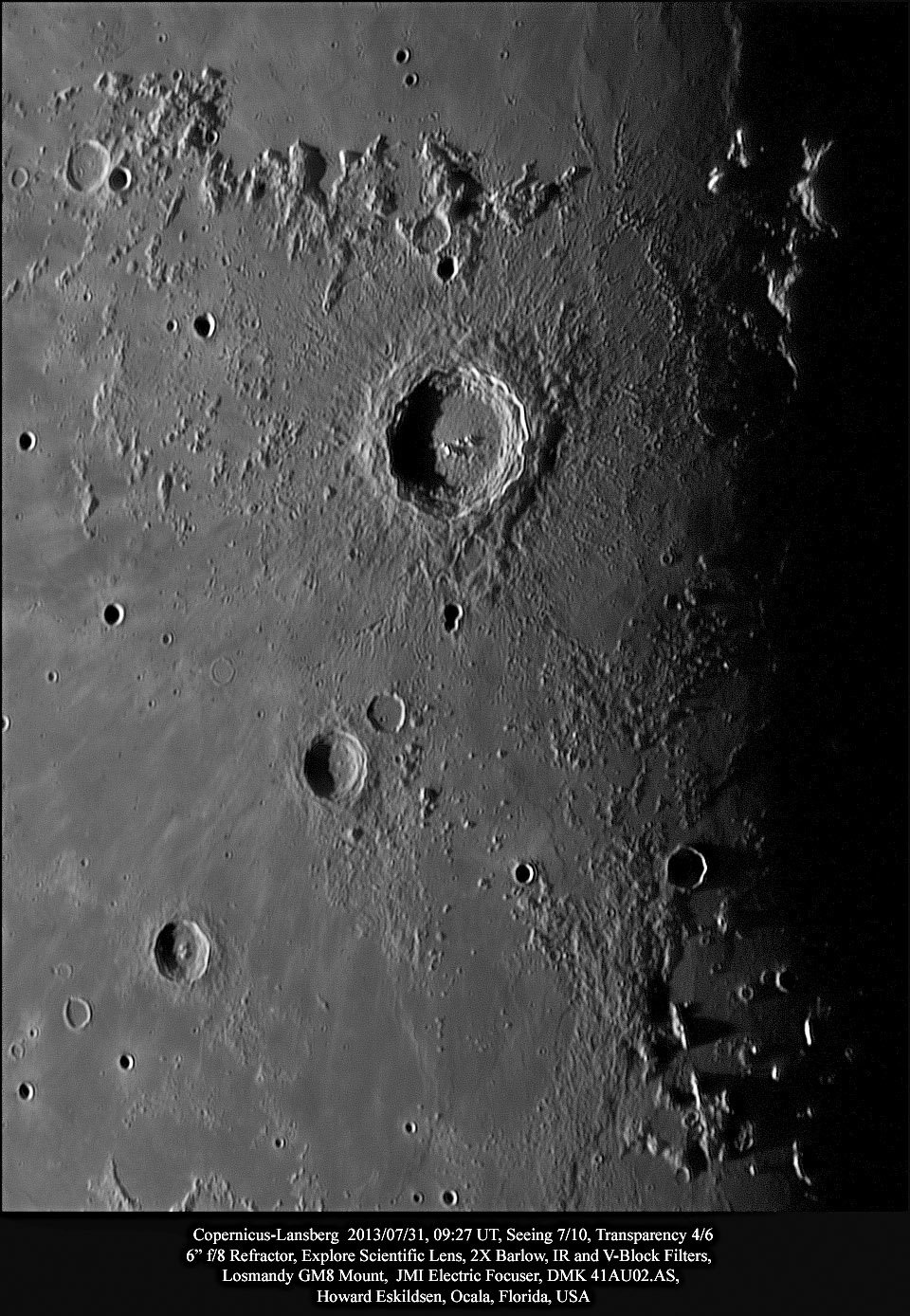August 5, 2013
Typical?

image by Howard Eskildsen, Florida
My first scientific paper was on central peaks of lunar craters and they continue to fascinate me. Central peaks are caused by rebound of the highly compressed rock below the impact point. If all target areas were identical, perhaps all central peaks would be too, but Howard's synoptic view of the area south of Mare Imbrium gives three examples of differences. Copernicus has a nearly east-west line of relatively small peaks that are mostly not centralized. To the south, southwest of Copernicus is Reinhold, a complex crater about half the larger's diameter and with no central mountain to speak of. Interestingly, the LRO QuickMap shows a hill roughly on either side of a 10 km wide central depression about 200 m deep. Such central pits are common on Mars and some icy satellites where a layer of ice evaporated during the impact process; that presumably was not the cause of Reinhold's depression. Its lack of a central mountain is something of a mystery. Further to the south, southwest is Lansberg, a 38 km wide complex crater with a quite massive central complex composed of two large, overlapping mountains. Of these three craters, Lansberg has what one would assume was a typical central peak, but with this variety, a non-central chain, no peak and a massive peak, who knows what is typical? All previous central peak studies were based on Lunar Orbiter IV images, with QuickMap it is possible to redo those studies with far better topographic information.
Chuck Wood
Related Links
21st Century Atlas chart 22.
Yesterday's LPOD: Cleo 3
Tomorrow's LPOD: A Channel Within a Channel
COMMENTS?
Register, Log in, and join in the comments.



